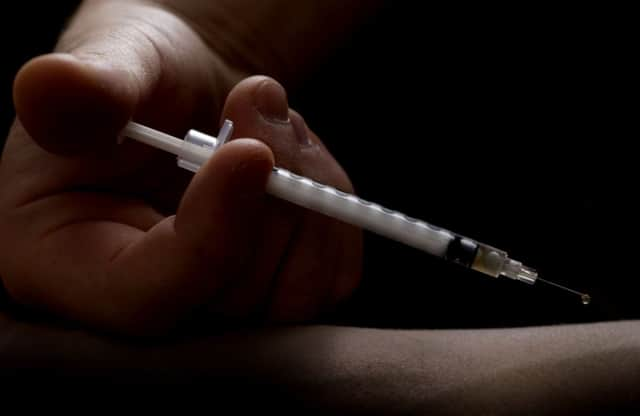Leaders: Youngsters must get message about drugs


Yet according to figures unearthed through Freedom of Information legislation, we learn of a growing number of children being hospitalised in Scotland as a result of drug-taking.
Even children under the age of ten have been treated by doctors in hospital wards. Last year there were 119 incidents where young people aged between ten and 18 required hospital attention after taking drugs, a rise of 35 per cent on 2011. Awareness of the dangers of drug taking also appears to be falling among teenagers.
Advertisement
Hide AdAdvertisement
Hide AdAddressing the many problems caused by drug abuse is an expensive and labour-intensive business. It requires action on a number of fronts including treatment, counselling and rehabilitation. But nowhere is the “front line” more important than in education programmes to alert youngsters at an early age to the physical and behavioural dangers posed by drug abuse.
Looking at these worrying statistics, it seems as if the message is not getting through, or not getting through consistently and effectively across Scotland and in particular the Central Belt areas associated with deprivation and poverty.
It is difficult to make headway when children are brought up in homes with drug-abusing parents. But attempts must be made to break the cycle. And critical in the breaking of that link is education by social work departments, family counsellors, but above all in schools.
Basic programmes are available spelling out general health and wellbeing. Less immediately obvious, but no less corrosive, is the damage to the psychological well-being and the ability to make rational choices.
The indulgent complacency of “one fix will do me no harm” or “I’m in control and know when to stop” is deeply ingrained in the mind of the drug-taker. Indeed, they are common in almost every case of repeated abuse and addiction.
However, there are some encouraging signs that the drugs programme elsewhere is making headway and that the overall picture gives grounds for hope. The Scottish Crime and Justice Survey for 2012-13 showed a fall, albeit modest, in illegal drug use, down from 6.6 per cent in 2010-11 to 6.2 per cent in the last year. And a report last month suggested that the number of young Scots smoking, drinking and using drugs is at its lowest level ever recorded.
But with the incidence of young people in need of hospital treatment for drug use on the rise, the focus must be on health education, and no opportunity should be missed to drive home the message on every appropriate occasion.
Queen’s well-chosen words
THIS year’s Queen’s Speech was more than usually resonant in Scotland, highlighting as it did the importance of reconciliation after a gruelling independence referendum campaign.
Advertisement
Hide AdAdvertisement
Hide AdMany, she said, felt “great disappointment” and others “great relief” after the vote and “bridging these differences will take time”.
The theme of reconciliation was interwoven through a number of reference points including the First World War and Northern Ireland. She reminded us that while it can often seem that reconciliation stands little chance, the Christmas truce across the trenches in 1914 “reminds us peace and goodwill have lasting power”.
It was a timely and well-chosen lesson and one that will strike a chord with many as we enter what is likely to prove a divisive and hard-fought general election campaign.
The inspiration for her message flowed from her viewing of a sculpture by Josefina de Vasconcellos named Reconciliation. Reminiscing on her visit to the Crumlin Road Gaol, she said what was once a prison during the Troubles “is now a place of hope and fresh purpose; a reminder of what is possible when people reach out to one another, rather like the couple in the sculpture”.
One of her most memorable visits for many was a tour of the set of Game of Thrones. Photographers were denied the image of the Queen sitting on the Iron Throne.
But arguably the bigger losers this year were those who lost money on the absurd wager that she was planning to stand down. They should have known better.